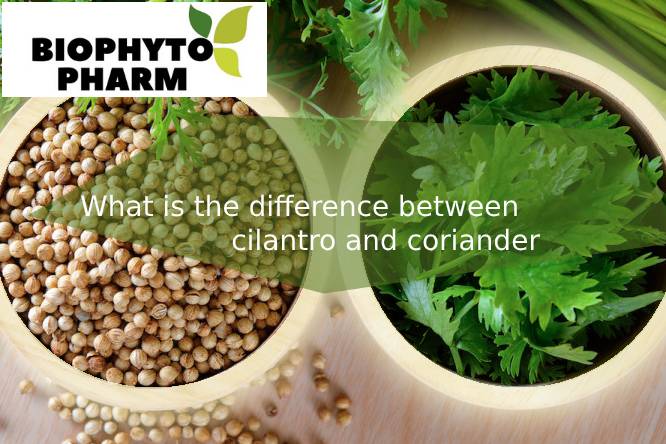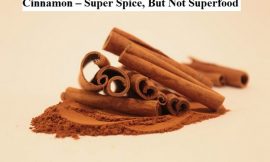What is the difference between Cilantro and Coriander? Are they alike or different? If you have ever questioned this spice used around the world. Get attached as we tend to glance at what they are and how to use Cilantro and Coriander in cultural cookery.
What is Coriander? What is Cilantro? Is the unit identical or different? study these spices and the way to use Cilantro and Coriander in cultural cuisine. | Is Coriander identical to Cilantro? Both Coriander and Cilantro are one plant. This plant is entirely named Coriander, and also the seeds are called Coriander in most places. Generally, once somebody says Coriander, it is the seeds they are bearing on.
Leaves of Cilantro and Coriander & their origins
The leaves are wherever there is a variation according to the name. Within the United States, they are called Cilantro, whereas, in Britain, they are conjointly referred to as coriander (or coriander leaves, to differentiate from the seeds).
What is the difference between Cilantro and Coriander? Are they identical or different? Are Cilantro And Culantro The Same? No, Cilantro and Cilantro are entirely different plants. However, they are a part of an identical family of plants, conjointly including celery, parsley, and carrots. Culantro features are of more robust flavor, and also, the leaves are more significant and a lot spikey. What are the origins of Coriander/Cilantro? It is believed that Coriander originated in an Asian country. However, it is prominent in many other countries and is incorporated into cuisines across the planet.
What is Cilantro? Cilantro is called coriander leaves in some other areas. This bright and aromatic herb adds a light flavor to any dish. Across the globe, these two species are often denoted as Coriander. However, in North America, we differentiate the fresh, flat-leafed grass by calling it Cilantro (which is just the Spanish translation of Coriander). If a flower by any other name would give a sweet scent, does this go for Coriander, too? As it seems, the seeds and leaves of C. sativum have highly distinguished flavor profiles and culinary usage.
What Will Cilantro Style look Like?
Cilantro is a herb that adds a savory freshness to dishes, yet as a stunning color. It shapes a style that has a slight citrus undertone to that which is slightly tart. Some individuals cannot eat more than a small quantity of Cilantro. Otherwise, it feels like they taste soap in their mouths. However, this often happens to some populations.
How To Use Cilantro?
What is the difference between Cilantro and Coriander in terms of usage? Cilantro could be a common ingredient in several cultures, particularly in Southeast Asia and Central America. Suppose utilized in a well-made dish. Since its flavor becomes lighter and less intense as it is made, it is most ordinarily employed in raw dishes or as a garnish. It has generally placed before being done.
Cilantro In Sauces
What is the difference between Cilantro and Coriander regarding blendings? Cilantro is one of the herbs in North African sauce, chermoula, famous with fish, vegetables, and several foods, also used as a marinade. It is usually found in the South American sauce, chimichurri, which is familiar with grilled meats.
Using Green Cilantro
Since the flavor of Cilantro will diminish with heat, it has usually put into dishes that are either cold or raw. Some of the most effective uses are being mixed with the Mexican favorites Salsa and guacamole. It is always one among the contemporary flavors brought to what is usually thought-about Laos’s national dish, larb/LARP, typically found in South/Central American ceviche.
Cilantro adds a new color to Vietnamese fresh spring rolls and the dish and garnishes from Trinidad island, chow (formed with numerous tropical fruit). However, pineapple chow is among the foremost common).
How to Cook With Cilantro?
While the flavor will be reduced, Cilantro usually gets into the dish when food is being made, making it so fresh at the end. You can discover it in some Indian curries and dishes like Vietnamese pho. It is shown throughout the Brazilian stew, “moqueça,” and Portuguese soup “açorda.”
It has typically functioned in a variety of Persian dishes, particularly dishes every day for Nowrooz, like Persian herb rice with fish, “sabzi Polow Mahi,” and Persian herb” frittata,” “Kuku sabzi.”
Cilantro As a Garnish
The list of dishes wherever Cilantro is there as a garnish might carry on; however, some well-known dishes contain fish tacos, Indian curries like “keema matar,” and lots of Thai and Vietnamese dishes.
What is the difference between cilantro and coriander seed-wise? Coriander seeds are a category with odor citrus and floral aroma. They are utilized as a flavor to dishes in varied cultures.
Benefits of Cilantro And Coriander
What is the difference between Cilantro and Coriander according to benefits? Coriander seeds, extract, and oil may all assist in lessening blood sugar. People who own lower blood sugar rates or are treated with diabetes medication should consider Coriander because it is efficiently downing blood sugar.
According to studies, the same dose of coriander seed extract lowered blood sugar and increased insulin secretion in diabetic mice.
Growing and Harvesting of Cilantro and Coriander
What is the difference between Cilantro and Coriander? Cilantro & Coriander are grown in the field, but most people like them in pots. It makes the plant lives longer as it can go further to grow if it is inside in wintertime. It is an easy grass to get older indoors and outside, and the beginning of seeds is a breeze.
This plant does not last long. If it is exciting and you do want it around all the time, sow them periodically. If you harvest coriander seeds from your plants, it is necessary to get them ready before sowing. Do not be upset if it does not work out. Firstly, it should be producing many seeds by mid-summer for a second trial.
Related Article:Can You Swallow Pomegranate Seeds?
Difference Between Coriander And Cilantro Benefits
He asks for a bunch of Coriander and tells to chop it and throw away the stems, but he also refers to fresh coriander leaves and coriander seeds. As can see, in North America, the word coriander refers to fresh stems and leaves of the coriander plant, while in North America, the word coriander refers to only dried seeds. Coriander, dried coriander leaves are often sold in bottles, but there is always Coriander if that is not enough. Sources: 0, 10
Ground coriander is part of many traditional spice blends in Indian, Middle Eastern, and African cuisine. Coriander seeds and ground coriander can be found in the spice department of any local market. If you do not have coriander seeds available, replace them with an equal amount of cumin, cumin, fennel, or a combination of all three. Sources: 0, 9
In many parts of the world, the leaves of the plant Coriandrum sativum are called coriander leaves. The dried seeds of the coriander plant are colored yellow to brown and have downward running ridges. While “coriander,” as mentioned above, refers to the fresh leaf content of the seeds, “coriander” can also refer to the seeds. Sources: 9, 10
Coriander and Coriander come from the same plant known as Coriandrum sativum (Coriander). The term coriander refers to the stems and leaves, while Coriander refers to the dried coriander seeds. Coriander and coriander seeds come from the same plant, so you might wonder how similar they are. Sources: 4, 6
The soft, feathery green serrated coriander leaves and stems are used in most dishes. In many Asian recipes, Coriander is often referred to as Chinese parsley or coriander leaves. Coriander can be sold fresh from the seeds and eaten or processed whole or ground into a fine powder. Sources: 3, 4
As a spice, the lemony-flowery taste of Coriander finds its way into many Asian, Latin, and Indian dishes and European cuisine. Coriander seeds can be used in Pickling Recipes as a whole, crushed, ground, or many other recipes, including curries, rice dishes, and soups. The coriander flavor tends to the warm spice category with cinnamon and nutty nuances. Sources: 0, 3
When we talk about Coriander, most people refer to the spice made from the plant’s seeds. However, the leaves of the coriander plant, along with the herbs known as Coriander and Chinese parsley and the round seeds, are used to flavor coriander. This spice is often found in Indian spice blends such as garam masala and is used in many savory dishes. Sources: 0
Coriander comes from the plant Coriandrum sativum, also related to parsley, carrots, and celery. In the United States, coriander seeds are called Coriander, and their leaves are called Coriander. In other parts of the world, they call it both the seeds and the leaves. Sources: 7
Coriander leaves and Coriander are the same, and they offer the same nutritional and health benefits. The taste of Coriander and Coriander differ, but coriander seeds can be roasted or ground and used in recipes. Sources: 9
Coriander, on the other hand, is often described as fresh, with a parsley flavor. Also called Chinese parsley or coriander leaves in most grocery stores, the herb is often referred to as Coriander. Sources: 9, 11
Put a bundle of the stems into a glass of water, cover it with a plastic bag and fasten it with a rubber band to the water. A bunch of Coriander can be stored in a plastic bag in the fridge for up to 1 week. Sources: 11
If you use fresh coriander leaves or Coriander in your kitchen, you will probably use more of them. If you are making something that does not benefit from the green color (like a red Thai curry) or spicing up the coriander flavor, use the stems instead of the chops. The stems are also helpful if someone at your table does not like the taste of coriander leaves (this is known to happen to my younger ones at my table). Sources: 8, 9
To learn more about the differences between Coriander and Coriander, read our article about Coriander vs. Coriander. In this article, we will discuss the health benefits of the coriander plant’s leaves, stems, and seeds. Fresh Coriander (coriander leaves) can be purchased at peak times. Sources: 5, 9
Coriander is a good disinfectant, has antimicrobial properties, and protects against infectious diseases such as conjunctivitis. In Chinese medicine, coriander seeds aid digestion and treat stomach problems, and fresh leaves can be eaten to avoid bad breath. Coriander plants are also used to treat digestive problems and urinary tract infections. Sources: 5, 10
Studies have shown that coriander seeds lower blood sugar by increasing enzyme activity that helps remove sugar from the blood (Panoff, 2019 ). Studies have also shown that Coriander can help reduce risk factors for heart disease like high blood pressure and LDL (low-density lipoprotein, which is your bad cholesterol) while also increasing HDL (high-density lipoproteins, which are your good cholesterol). Sources: 1
When using leafy vegetables such as coriander or coriander seeds, remember that not only are they an excellent garnish for beautiful dishes, but they can also be used for so many health benefits that using them is a win-win situation. Coriander leaves and coriander seeds are toppings for many clean plant-based meals in the home. Sources: 1
Jamie Oliver uses Coriander in his recipe but is confused about why we call it Coriander in Australia. Although Cilantro is the Spanish translation of coriander countries, as in Mexico and other countries such as Costa Rica, the herb is called Cilantro. Sources: 2
This exciting article confirmed my thoughts that Coriander is Coriander, as I was unaware that it is the Spanish spelling of the herb. In any country, we use ‘coriander’ to refer to the leaves and ‘coriander’ to refer to the seeds, but in the UK, we call both ‘seeds.’ In some languages, such as Dutch, “coriander” is the exact word used for both leaves and seeds.
Follow us:Facebook,Twitter,Instagram,Pinterest
Cited Sources
- https://www.thespruceeats.com/cilantro-vs-coriander-6952940
- https://cleanfoodmama.com/what-is-cilantro-coriander-uses-and-benefits/1
- https://delishably.com/spices-seasonings/coriander-cilantro2
- https://www.freep.com/story/life/food/recipes/2017/07/01/cilantro-versus-corainder/103325214/3
- https://draxe.com/nutrition/cilantro-benefits/4
- https://www.organicfacts.net/health-benefits/herbs-and-spices/health-benefits-of-coriander.html5
- https://www.spiceography.com/coriander-vs-cilantro/6
- https://www.healthline.com/nutrition/coriander-benefits7
- https://www.mapleandmarigold.com/5-benefits-of-cilantro-coriander/8
- https://www.verywellfit.com/coriander-benefits-side-effects-and-preparations-41784629
- https://thedaringkitchen.com/coriander-vs-cilantro/10
- https://www.southernliving.com/seasonings/coriander-vs-cilantro11





